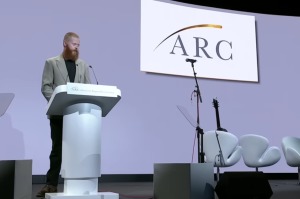Historic Preservation
The 'Wall of Separation'
The National Historic Preservation Act on its face does not exclude religious historical sites: As far as Congress is concerned, they too are eligible for federal funds to help with their upkeep. But the executive branch, to satisfy radical separationist interpretations of the First Amendment, has read the religious exclusion into the statute since 1966.
The Bush administration has now changed that. Historic sites that happen to be religious in nature may now apply for preservation funds on an equal basis with secular historical sites. Why did it take so long? Because radical separationism has had a stranglehold on American constitutional thinking for a long time.
Radical separationism starts with the basics of the First Amendment's Establishment Clause—that there is to be no official government church in the United States—but then takes it a long step further: Government must not help religion at all, even remotely.
Radical separationists see themselves as heirs of Thomas Jefferson. During his presidency, Jefferson wrote a letter to a Baptist group in Danbury, Connecticut, in which he described the First Amendment as having set up a "wall of separation" between church and state.
That is the origin of the "wall of separation" metaphor: not the Constitution, or any of its amendments; not the Declaration of Independence—just a letter from a president to the Danbury Baptists. He wrote the letter to assure them that the federal government could not set up a state church and thereby disenfranchise those, like Baptists, who would be unwilling to join that state church. This had been the history of Baptists in England, and they were concerned. The president's letter put their minds at ease by assuring them that, as religious believers, they had a place in the public square that could not be taken away from them.
Regrettably, the Supreme Court took up the "wall" metaphor and misapplied it. Thus the phrase that Jefferson used to reassure religious people became the instrument of radical separationism—government, that is, cannot help religion at all.
In a recent article in the Wall Street Journal, UCLA law professor Eugene Volokh traced the effects of radical separationism on the Historic Preservation Act. The executive branch, he argued, may only have been trying to follow what the Supreme Court was saying—and in the early 1970s, the Court was saying that public money for repairing private school buildings could not be used at religious schools. Supposedly, if the government helps paint a religious school, or helps fix its boiler, then it would constitute an "endorsement of religion" that would violate the "wall of separation."
However, the Court has since retreated to a more equality-based view: When the government is administering a generally available aid program, religious applicants for that aid must be treated the same as secular applicants. Discrimination against the religious applicants is not a "separation of church and state" in keeping with the First Amendment; it's anti-religious bias, a violation of the First Amendment.
So we can applaud the current administration's decision to make religious buildings eligible for historic preservation funds. It is an important step forward in restoring the intended meaning of the Constitution.





























